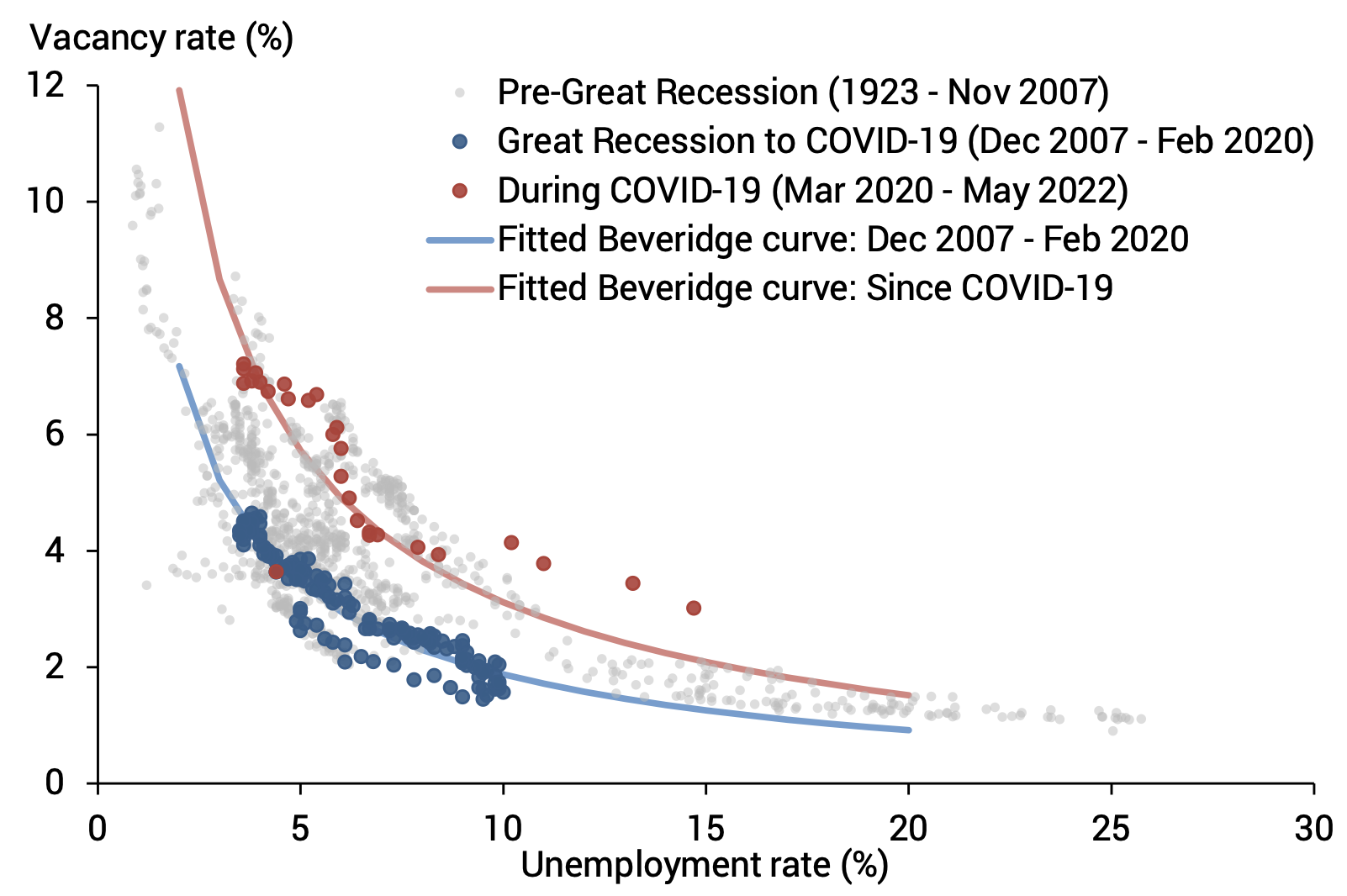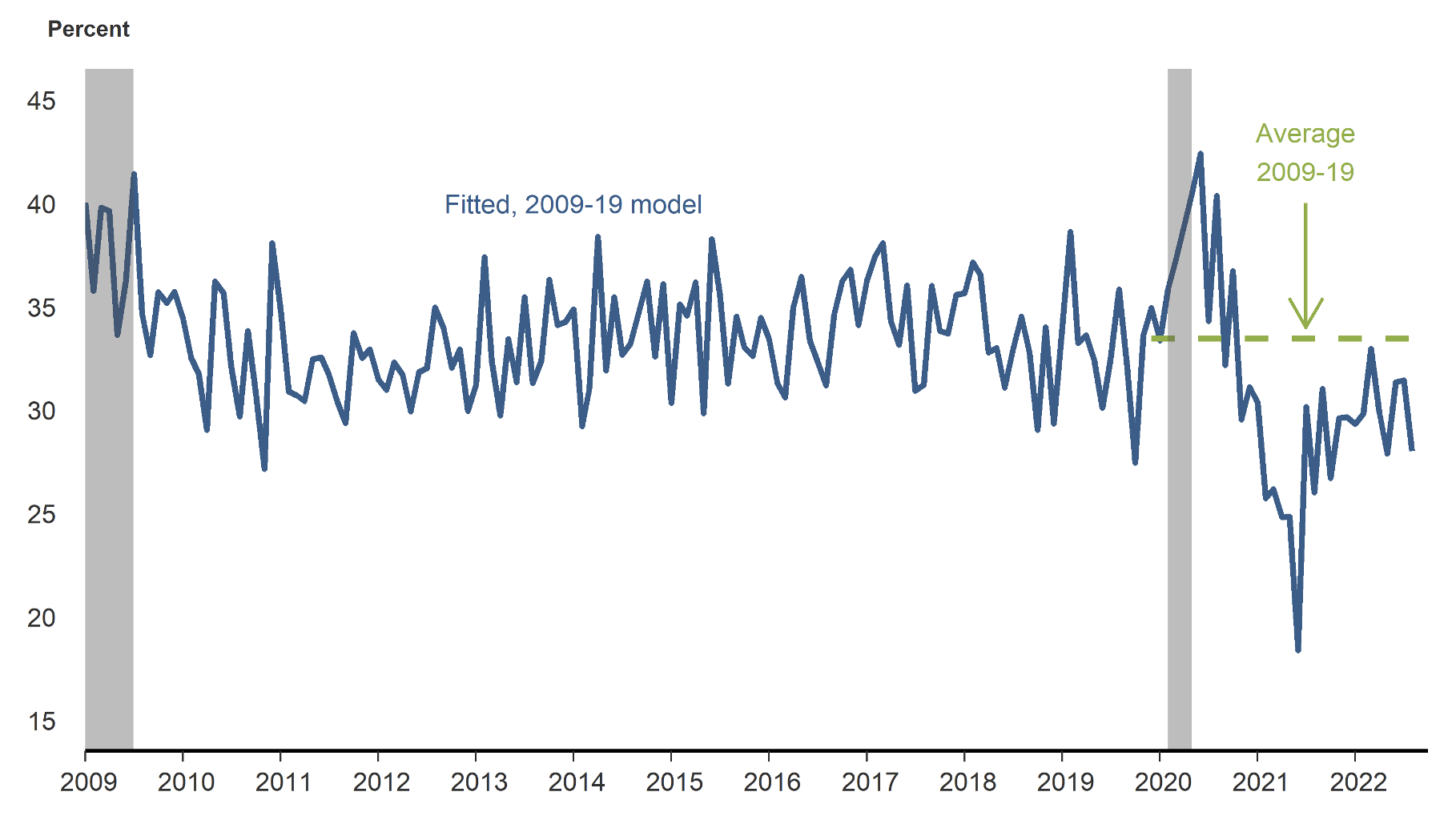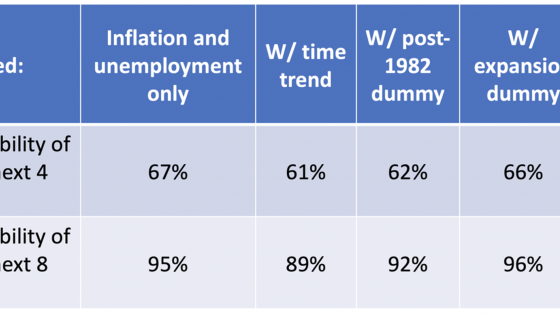The US labour market soared to new heights as the economy emerged from the COVID-19 pandemic this year. Unemployment fell back to 50-year lows, and job openings surged to levels well above prior historical highs (Michaillat and Saez 2022). Inflation has also spiked this year, substantially exceeding the 2% goal deemed consistent with the Federal Reserve’s price stability mandate. Under these circumstances, a crucial question facing US monetary policymakers is whether it is possible to achieve a ‘soft landing’ in the labour market. In other words, is it possible for tighter monetary policy to restrain economic growth just enough to substantially lower job openings and reduce price inflation to mandate-consistent levels, without a large increase in the unemployment rate?
Among economists and policymakers, opinion differs sharply on the possibility of achieving such a soft landing. Initial Federal Reserve analysis in the late spring argued that this outcome was plausible (Figura and Waller 2022). This argument was met by a vigorous opposing response, notably from Blanchard et al. (2022a, 2022b; see also Summers 2022).
Our earlier analysis with Brandyn Bok (Bok et al. 2022), conducted largely in parallel with this work by others, came down on the soft-landing side of the argument. We focused on the Beveridge curve trade-off between lower job vacancies and higher unemployment, along with the efficiency of the underlying job matching process. Subsequent data releases have provided further evidence in favour of the soft-landing view.
Pinning down the Beveridge curve
The Beveridge curve is a graphical depiction of the relationship between job vacancies and unemployment. Figure 1 displays monthly data for this relationship from 1923 through June 2022, reproduced from our earlier work (Bok et al. 2022). Both series are measured relative to the labour force using data extended from Petrosky-Nadeau and Zhang (2021). In general, unemployment and job vacancies change in opposite directions over the business cycle, reflecting their opposing implications for labour market tightness.
Figure 1 Fitted Beveridge curves: Pre-pandemic and more recently
Source: Bureau of Labor Statistics and authors’ calculations.
We fit two Beveridge curves to subsets of the data in Figure 1. We use a standard Cobb-Douglas specification for the underlying matching function (Petrongolo and Pissarides 2001, Elsby et al. 2015). This has the appealing properties of: (1) constant returns to scale (CRTS), such that an equivalent proportional change in unemployment and vacancies yields the same proportional change in job matching; and (2) convexity, implying a steeper Beveridge curve as unemployment falls – this reflects the increasing difficulty of filling job openings as fewer job seekers are available.
Beyond its slope, the position of the Beveridge curve captures structural features of the labour market, most notably the efficiency of the matching process between employers and job seekers. Curves closer to the origin reflect higher levels of match efficiency. Increases in the rate of job separations due to layoffs have effects similar to a reduction in matching efficiency, shifting the Beveridge curve outward. Understanding labour market adjustments thus requires knowledge of both the slope and position of the curve. For example, Figura and Waller (2022) argued that the Beveridge curve is steep but may be misperceived as flat because it has shifted position in response to sharp movements in job separations during the pandemic.
Given such shifts, we focus on subsamples of data points for which structural factors in the labour market are roughly stable. Thus, the blue line in Figure 1 shows the fitted Beveridge curve using monthly data from the Great Recession to just before the pandemic recession, December 2007 through February 2020 (blue dots).
We then examine what happens when we incorporate more recent data points, preserving all the properties of the previous matching function (blue line) except for the efficiency of the underlying matching process. In other words, we shift the first Beveridge curve to fit data points that include recent historically high job vacancies and low unemployment (red dots). We exclude the early months of the pandemic (March through July 2020) when extraordinarily large job losses occurred and quickly receded. The outward shift to the new Beveridge curve in Figure 1 (red line) implies a significant reduction in matching efficiency, of about 25%. It also implies sizable increases in the unemployment rate as vacancies fall, assuming movements occur along that curve: for example, relative to the May 2022 value of 3.6%, unemployment would be estimated to rise to 6.4% if the vacancy rate falls from its May level of 7.2% to its pre-pandemic peak of 4.6%.
The Cobb-Douglas matching specification from Figure 1 has been used extensively by researchers, perhaps due largely to mathematical convenience and broad applicability. However, it may not be adequate for capturing unique features of the pandemic labour market. We therefore examined the results when we rely on an alternative job matching function first used by Den Haan et al. (2000) (henceforth, ‘DRW’). This function preserves the CRTS property but allows the job-matching response to changes in vacancies and unemployment to vary depending on their level.
Figure 2 shows the resulting curve (yellow line) fitted using the DRW matching function. The curve in Figure 2 is very steep at recent high levels of job vacancies and low levels of unemployment. This is consistent with the possibility that unemployment will not rise substantially as vacancies fall. In this case, a decline in the vacancy rate to its pre-pandemic peak of 4.6% would be associated with the unemployment rate rising only to 4.4%. This is 2 percentage points less than implied by the red curve shown in Figure 1. This increase in unemployment to 4.4% is broadly consistent with recent projections from members of the FOMC (Board of Governors 2022).
Figure 2 Fitted Beveridge curve: Alternative functional form
Source: Bureau of Labor Statistics and authors’ calculations.
Initial evidence on the possibility of such a soft landing has been favourable. At the time we produced our original analysis, job openings had already declined nearly half a percentage point from their March high, without any corresponding increase in the unemployment rate. Since then, we have three additional data points for the Beveridge curve, which include a sharp decline in job openings in August and only a slight net increase in the unemployment rate. Since March, the adjustment in the labour market has been consistent with the steep Beveridge curve fitted in Figure 2 (yellow line), reinforcing the soft-landing perspective.
Employment reallocation and matching efficiency during the pandemic
Our analysis of the Beveridge curve is consistent with the possibility of a soft landing, with little increase in the unemployment rate as the labour market cools. The alternative view, that unemployment is likely to rise substantially, is based in part on high levels of employment reallocation during the pandemic and recovery, which can impede the job matching process. Blanchard et al. (2022) argued that ongoing employment reallocation and consequent low matching efficiency following the COVID shock means vacancies are unlikely to drop without a substantial increase in unemployment.
We explored this perspective in our earlier analysis (Bok et al. 2022) and found that employment reallocation does not appear to have substantially reduced matching efficiency. To summarise that analysis here, Figure 3 shows our estimate of matching efficiency based on the mathematical relationships that underlie the Beveridge curve, using monthly data for 2009–19 (following Ahn and Crane 2020); we use those results to fit values for the post-2019 period (though August 2022). Matching efficiency rose substantially early in the pandemic, dropped in 2021, and has recovered close to the pre-pandemic average in recent months. For the first eight months of 2022, matching efficiency was down about 10% relative to the pre-pandemic period. This suggests only a small reduction in matching efficiency compared with the 25% reduction associated with a large shift in the Beveridge curve in Figure 1.
Figure 3 Job matching efficiency based on 2009-19 fitted model
Note: Data through August 2022. April 2020 dropped due to undefined value. Grey bars denote NBER recession dates.
Conclusions
Our analysis suggests that recent unemployment-vacancy combinations lie on the steep portion of a Beveridge curve that is close to its pre-pandemic location, consistent with little change in the efficiency of the job matching process. Similar to Figura and Waller (2022) and more recent research from the St. Louis Fed (Cheremukhin and Restrepo-Echavarria 2022), our findings indicate the US labour market could see only modest increases in unemployment as growth slows and job vacancies decline, suggesting policymakers have a path to achieving a soft landing.
Data points published subsequent to our initial analysis have reinforced the soft-landing perspective. Thus far in 2022, the decline in job openings has closed about 45% of their excess above the pre-pandemic high, without a sizable increase in the unemployment rate. This is consistent with the steep Beveridge curve depicted in our Figure 2, reinforcing the possibility of a soft landing. That said, a crucial factor determining the location of the Beveridge curve is the rate of job separations. If layoffs were to rise, for example because of recession concerns, unemployment would rise independently of changes in the vacancy rate.
References
Ahn, H J, and L D Crane (2020), “Dynamic Beveridge Curve Accounting”, Federal Reserve Board of Governors, Finance and Economics Discussion Series 2020-027.
Blanchard, O, A Domash, and L Summers (2022a), “Bad News for the Fed from the Beveridge Space“, Policy Brief 22-7, Peterson Institute for International Economics, July.
Blanchard, O, A Domash, and L Summers (2022b), “The Fed is wrong: Lower inflation is unlikely without raising unemployment", Realtime Economics blog, Peterson Institute for International Economics, August 1.
Board of Governors (2022), “FOMC Projections materials, accessible version”, 21 September.
Bok, B, N Petrosky-Nadeau, R G Valletta, and M Yilma (2022), “Finding a Soft Landing along the Beveridge Curve”, FRBSF Economic Letter 2022-24.
Cheremukhin, A, and P Restrepo-Echavarria (2022), “The Dual Beveridge Curve”, Federal Reserve Bank of St. Louis Working Paper 2022-021.
Den Haan, W J, G Ramey, and J Watson (2000), “Job Destruction and Propagation of Shocks”, American Economic Review 90(3): 482–498.
Elsby, M W L, R Michaels, and D Ratner (2015), “The Beveridge Curve: A Survey”, Journal of Economic Literature 53(3): 571–630.
Figura, A, and C Waller (2022), “What Does the Beveridge Curve Tell Us about the Likelihood of a Soft Landing?”, FEDS Notes, Federal Reserve Board of Governors, 29 July.
Michaillat, P, and E Saez (2022), “Figuring out efficient unemployment”, VoxEU.org, 19 April.
Petrongolo, B, and C A Pissarides (2001), “Looking into the Black Box: A Survey of the Matching Function”, Journal of Economic Literature 39(2): 390–431.
Petrosky-Nadeau, N and L Zhang (2021), “Unemployment Crises”, Journal of Monetary Economics 117: 335–353.
Summers, L H (2022), “Overheating conditions indicate high probability of a US recession”, VoxEU.org, 13 April.









